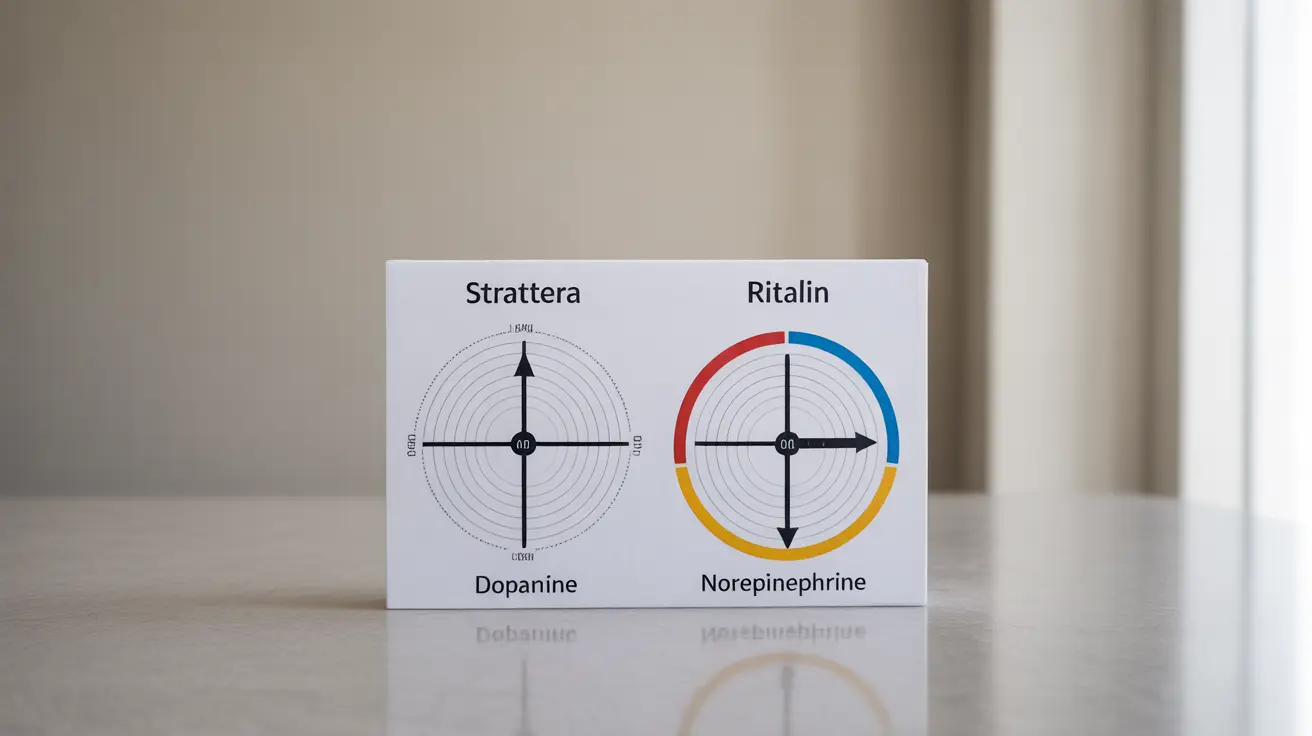When it comes to treating Attention Deficit Hyperactivity Disorder (ADHD), understanding the differences between medications can help patients and healthcare providers make informed decisions. Strattera and Ritalin represent two distinct approaches to ADHD treatment, each with unique characteristics and benefits.
This comprehensive guide explores the key differences between these medications, their effectiveness, and important considerations for treatment selection.
How Strattera and Ritalin Work Differently
Strattera (atomoxetine) and Ritalin (methylphenidate) work through different mechanisms in the brain to manage ADHD symptoms. Strattera functions as a norepinephrine reuptake inhibitor, while Ritalin is a stimulant that affects dopamine and norepinephrine levels.
Mechanism of Action
Strattera works by increasing norepinephrine levels in the brain, which helps improve attention and reduce impulsivity. Unlike stimulants, it doesn't directly affect dopamine levels, resulting in a different therapeutic approach to ADHD management.
Ritalin, as a stimulant medication, works by increasing both dopamine and norepinephrine levels in the brain. This dual action helps improve focus, attention, and behavior control more rapidly than non-stimulant alternatives.
Speed of Effect and Duration
The timing of therapeutic effects differs significantly between these medications. Ritalin typically shows results within 30-60 minutes of taking the medication, making its effects more immediate and noticeable. The effects usually last 4-8 hours, depending on the formulation.
Strattera, however, may take 4-6 weeks to reach full therapeutic effect. This longer onset time requires patience but may offer more consistent symptom management once therapeutic levels are achieved.
Safety and Risk Considerations
Addiction Potential
One significant difference between these medications lies in their potential for abuse. Ritalin, as a controlled substance, carries a risk of dependence and potential misuse. Strattera, being a non-stimulant, has no recognized potential for abuse, making it a preferred choice for patients with a history of substance use disorders.
Side Effect Profiles
Both medications can cause side effects, but their profiles differ. Common Strattera side effects may include:
- Initial nausea or stomach upset
- Decreased appetite
- Fatigue
- Mood changes
Ritalin's common side effects typically include:
- Decreased appetite
- Sleep difficulties
- Increased heart rate
- Anxiety or nervousness
Choosing Between Strattera and Ritalin
Healthcare providers consider several factors when recommending either medication, including:
- Patient age and medical history
- Previous response to ADHD treatments
- Presence of co-existing conditions
- Risk factors for substance abuse
- Patient preferences regarding dosing schedule
Frequently Asked Questions
- What is the difference between Strattera and Ritalin for ADHD treatment, and which works faster?
Ritalin works faster, showing effects within 30-60 minutes, while Strattera takes 4-6 weeks to reach full effectiveness. Ritalin is a stimulant affecting both dopamine and norepinephrine, while Strattera is a non-stimulant that only affects norepinephrine levels.
- Are there serious side effects or risks unique to Strattera compared to Ritalin?
Strattera has unique side effects including liver concerns and rare mood changes. Unlike Ritalin, it doesn't typically cause significant sleep problems or appetite suppression, but may cause initial nausea and fatigue.
- Can Ritalin lead to addiction, and is Strattera safer for people with a history of substance misuse?
Yes, Ritalin has potential for addiction as a controlled substance. Strattera has no recognized abuse potential, making it a safer choice for patients with substance abuse history or concerns.
- How long does it take for Strattera to start working for ADHD symptoms, and why is Ritalin usually tried first?
Strattera typically takes 4-6 weeks to reach full effectiveness. Ritalin is often tried first because it provides more immediate symptom relief and has a longer history of use in ADHD treatment.
- When might a doctor choose Strattera instead of Ritalin for managing ADHD?
Doctors might choose Strattera for patients with substance abuse concerns, those who experience significant side effects from stimulants, or when consistent 24-hour symptom control is desired. It's also preferred for patients with anxiety or tic disorders.




